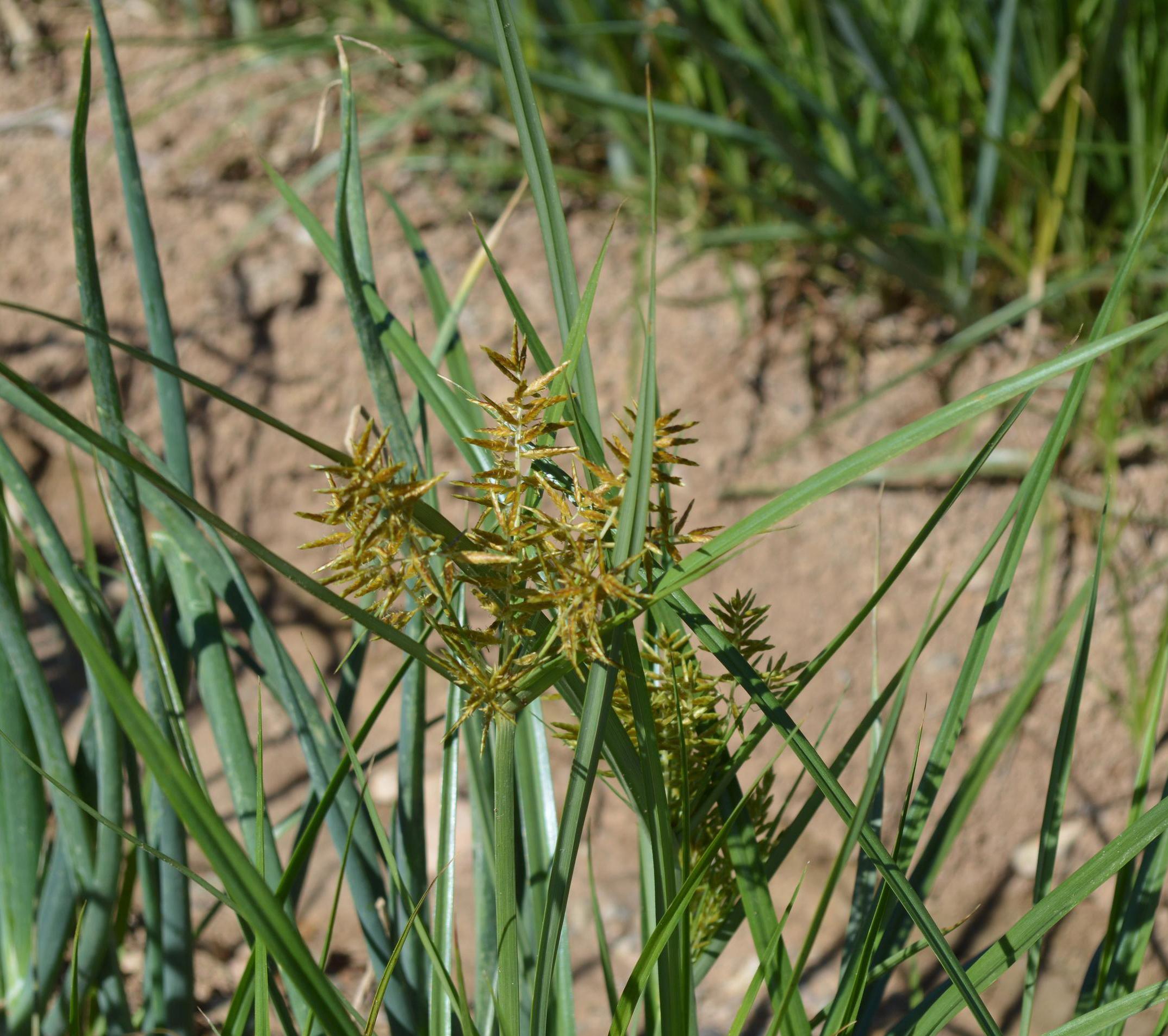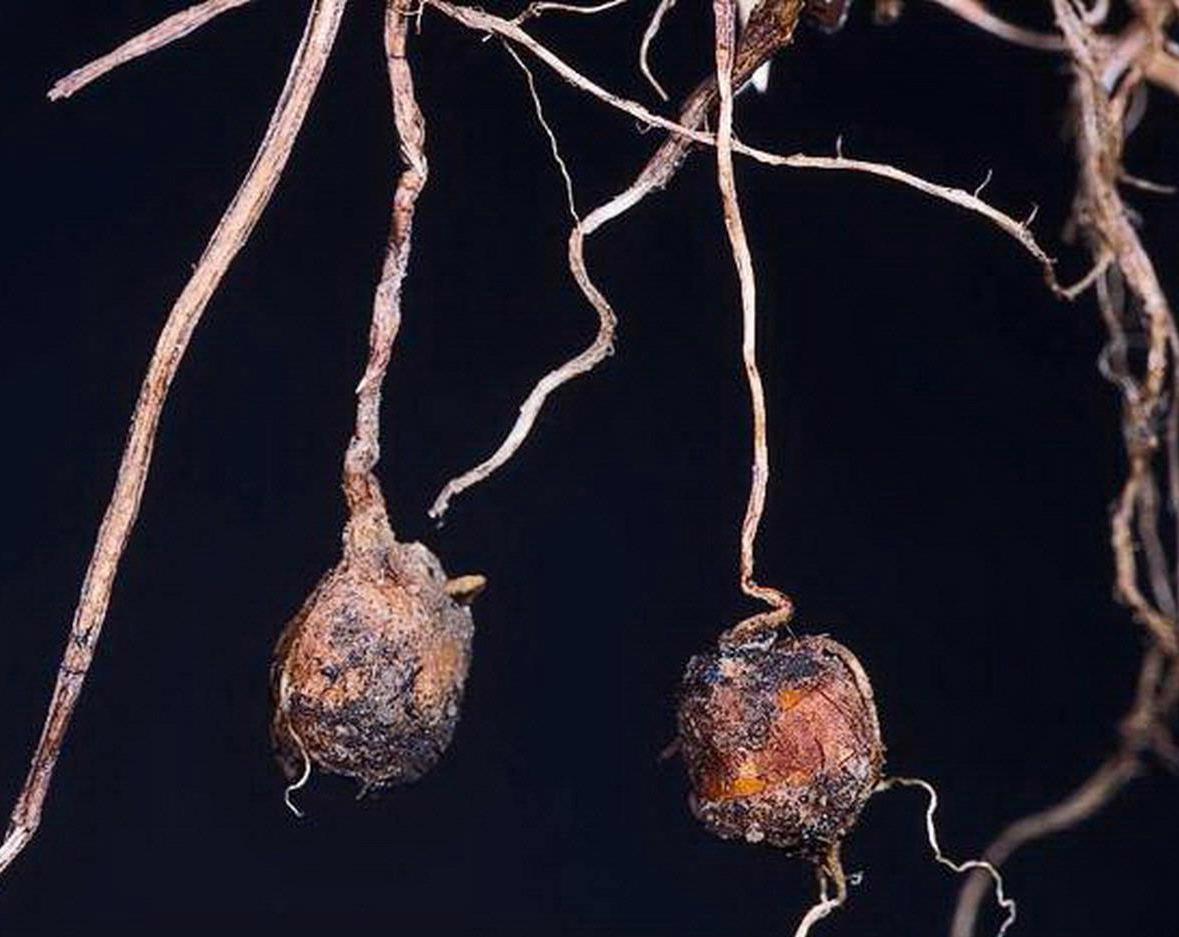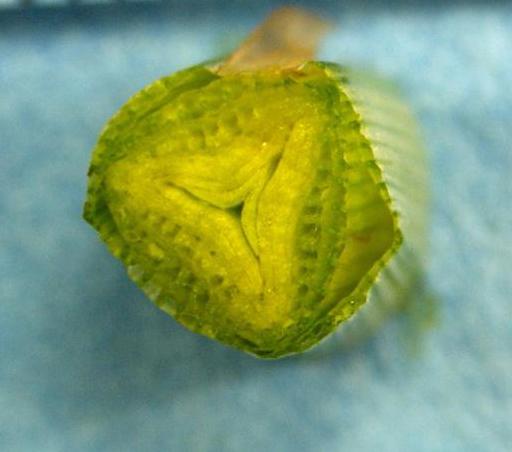Yellow Nutsedge in Strawberry Plantings
Return to Weeds
Yellow nutsedge (Cyperus esculentus) is a perennial sedge often mistaken for a grass. Leaves arise from a central triangular stem to form a clump that grows 1 to 3 feet high. Yellow-green leaves are up to ½ inch wide, smooth, and shiny on upper surfaces. It can reproduce from seed; however underground tubers forming at the end of each rootlet are the primary means for reproduction.
Yellow nutsedge in bloom.
(Photo: Howard F. Schwartz, Colorado State University, Bugwood.org)
Yellow nutsedge tubers.
(Photo: Joseph M. DiTomasco, University of California-Davis, Bugwood.org)
Yellow nutsedge stem cross section (notice the triangular shape).
(Photo: Bruce Ackley, The Ohio State University, Bugwood.org)
Management:
- Tubers can be spread by cultivation; work infested areas of fields last to avoid spread.
- Grass-specific herbicides are ineffective due to this plant’s different physiology. Apply non-selective contact herbicides to suppress nutsedge.
- Rotate with tall, thick-canopied plants for suppression.
- A few pre-emergent herbicides are effective.



